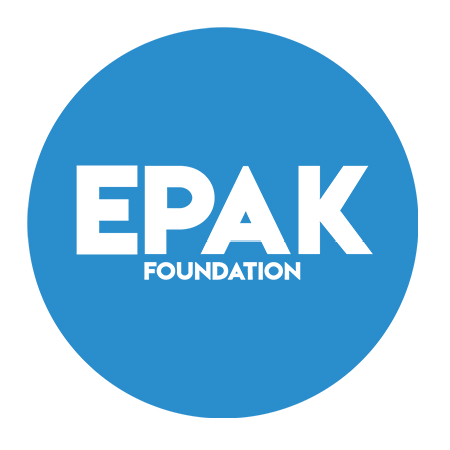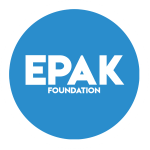Below are examples of well-written project proposals and creative ideas for inspiration.
SAMPLE 1: Elementary Drama and Musical Theater
Project Description
I am dedicated to creating a dynamic and inclusive performing arts program that encourages students to work together, build a strong sense of community, and develop empathy and respect. My goal is to ensure that every student feels they are a valued and integral part of a meaningful experience, both in the classroom and during performances.
To achieve this vision, I am seeking grant funding to purchase essential materials that will significantly enhance our performing arts program. The key components of this project include:
- Digital Piano/Keyboard: A digital piano will provide students with the ability to learn and practice their songs, allowing for better musical instruction and support during performances.
- Costume Pieces: Costumes are crucial in helping students fully engage in their roles and feel a sense of ownership and pride in their performances.
- Set Pieces and Props: These items will contribute to creating an immersive and engaging environment for students, making their performances more impactful and memorable.
- Music and Show Packets: Age-appropriate songs and scripts will help students develop their skills as expressive young actors, singers, and dancers. These resources are essential for teaching them how to convey emotions and stories through performance.
Goals & Objectives:
- Foster Collaboration: By working together on performances, students will learn to collaborate effectively, building strong interpersonal relationships and a sense of unity.
- Build Community: Inclusive performances will help students feel connected to their peers and to the larger school community, creating a supportive and encouraging environment.
- Develop Empathy and Respect: Through their involvement in the performing arts, students will develop greater empathy for others and learn to respect diverse perspectives and experiences.
- Enhance Student Experience: The acquisition of high-quality materials will enrich the students’ overall experience, making each performance feel special and significant.
Budget
- Amazon – Digital Piano/Keyboard – $400
- Amazon/Target/Walmart/Hobby Lobby – Costume Pieces & Props – $350
- Total Budget – $750
SAMPLE 2: 7th Grade Science
Project Description
I seek funding to enhance my 7th-grade science curriculum through a series of engaging, hands-on experiments designed to teach students about plate tectonics, the rock cycle, and states of matter. These experiments are not only aligned with key scientific concepts but also foster critical thinking, creativity, and collaboration skills that are essential for success in any field.
One of the core components of our project is an engineering challenge that will immerse students in the study of plate tectonics. In this activity, students will design and build structures using toothpicks and marshmallows, which will then be tested on a surface made of PVC pipes and wood that simulates an earthquake. This hands-on experiment allows students to explore the forces involved in tectonic movements while applying engineering principles to solve a real-world problem. By constructing and testing their designs, students will gain a deeper understanding of how earthquakes impact buildings and the importance of engineering in creating structures that can withstand natural disasters.
[… additional projects described as above…]
The impact of these hands-on experiments on the students’ academic and skill development cannot be overstated. By actively engaging in these activities, students will gain a deeper understanding of scientific concepts that are often difficult to grasp through traditional instruction alone. These experiments make science tangible and relatable, fostering a love for learning and encouraging students to explore the world around them with curiosity and enthusiasm. Moreover, the collaborative nature of these activities promotes teamwork and communication skills, as students work together to solve problems and complete tasks.
Beyond the immediate academic benefits, these experiments also help students develop essential life skills. The engineering challenge, for example, requires students to think critically and creatively as they design structures that can withstand simulated earthquakes. This experience not only reinforces their understanding of science and engineering but also teaches them the importance of resilience and perseverance in the face of challenges. Similarly, the hands-on activities related to the rock cycle and states of matter encourage students to approach problems with a scientific mindset, testing hypotheses, and drawing conclusions based on evidence.
SAMPLE 3: TK Field Trip
Project Description/Objective
Lemos Farm has been around since 1942, ensuring the student’s safety and promoting a fun learning environment. I have visited Lemos Farm for some years now and every year it has improved with new activities to allow the students to experience a real pumpkin patch. Past students who visited Lemos Farm can still recall the memorable experiences and how much they learned about the farm animals.
Lemos farm has an area with a variety of farm animals. The students are allowed to feed and pet the farm animals. We talk about what the farm animals eat the body parts and what are the baby animals called (chick, piglet, calf, etc.)
It will be a great learning experience for the students to learn about farming, what vegetables and fruits are harvested during the fall season, learn about the animals that live on the farm, and the life cycle of the pumpkins. Also, we will learn of other foods that grow on vines and the insights into the agriculture process and the importance of sustainable farming practices. It is also a great opportunity to ask open-ended cognitive questions (what is missing, what comes next, how are they alike.)
After the class field trip, we will continue the learning by asking WH questions. What did you like about the Farm? What animals did you see and what did you learn about the animals? How did it feel to feed the animals and ride the pony? Did you feel nervous to feed the animals and would you do it again? What type of different pumpkins did you see? And how are the pumpkins alike and different? How did the pumpkins feel and do pumpkins feel the same on the inside?
We will then draw a picture of what we enjoyed about Lemos Farm in their class journal and attempt to write a sentence with just beginning sounds. After the students have completed the drawing and written the attempted sentence, each child will stand in front of the class and talk about the picture they drew and read the sentence. The audience then asks questions. For example, a student may ask, “Did you like riding the pony fast or slow, what did you eat at the Farm, and what animals did you feed?) This experience allows a connection with the class and a sense of belonging.
Budget
Lemos Farm Entrance tickets 20 x $34.00

